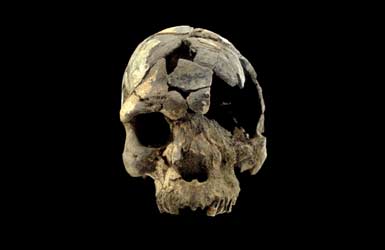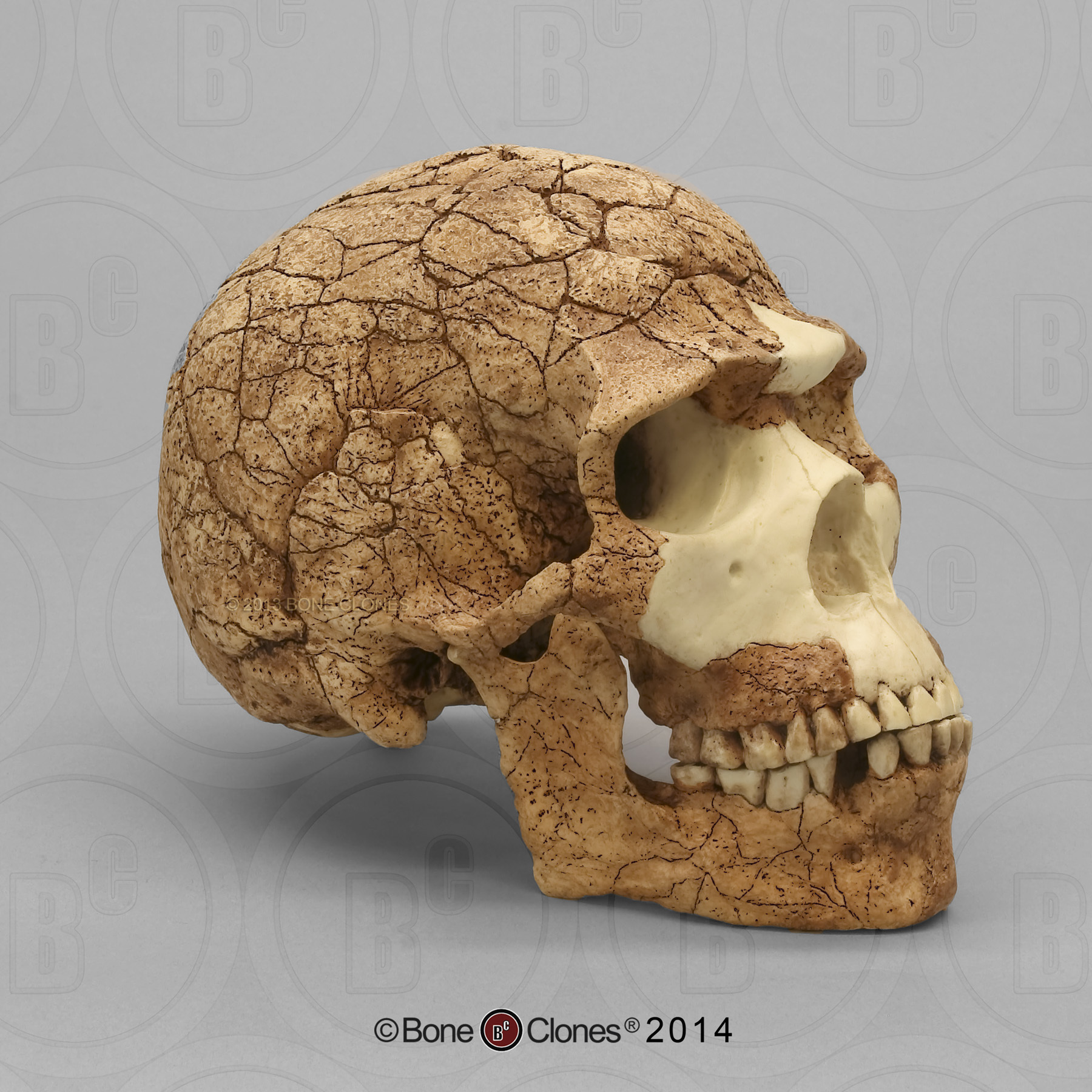Date Site Hominin Evolutionary Significance 40000 ya Tianyuan Cave China H. Sapiens and the Vindija 3316 Neanderthal.
 Neanderthals In Southwest Asia Wikiwand
Neanderthals In Southwest Asia Wikiwand
The remains found at Es Skhul together with those found at the Nahal Mearot Nature Reserve and Mugharet el-Zuttiyeh were classified in 1939 by Arthur Keith and.

Anatomically modern homo sapiens in qafzah cave. Bayesian phylogenetic tree relating Bacho Kiro Cave mtDNA to 54 present-day humans 10 directly radiocarbon dated ancient H. Instead dating revealed that the cranium had been buried for around 315000 years. It also provid.
Prior to this since the time of its. In this study we provide the first taphonomic and taxonomic descriptions of the micromammals from Misliya Cave where recently a Homo sapiens hemimaxilla has been reported. Early modern human or anatomically modern human AMH are terms used to distinguish Homo sapiens that are anatomically consistent with the range of phenotypes seen in contemporary humans from extinct archaic human species.
This finding significantly extends the time frame for the out-of-Africa presence of anatomically modern humans. Neither of the two major models proposed to account for modern human origins rapid replacement or regional evolutionary continuity emphasize these sizable collections from the Near East in their formulations. The bones belong to a mother and child and are among the earliest known examples.
The fossil evidence suggests that the earliest members of the Homo sapiens clade Jebel Irhoud Omo and Herto appeared in Africa during the late Middle Pleistocene 1 4. The subspecies of Homo sapiens that. These were discovered on the ledge just outside the cave where 18 layers from the Middle.
Anatomically modern humans evolved from archaic Homo sapiens in the Middle Paleolithic about 200000 years agoThe emergence of anatomically modern human marks the dawn of the subspecies Homo sapiens sapiens ie. It seems unlikely that they were Homo sapiens - anatomically modern humans didnt migrate out of Africa until after 100000 years ago according to most estimates. Oldest modern human find from China 45000.
The site is significant in paleoanthropology for the discovery of what were from 2018 to 2019 considered to be the earliest known remains attributed to Homo sapiens outside of Africa at that time dated to 185000 years ago. Important remains of prehistoric people were discovered on the site - some of the oldest examples in the world outside of Africa of virtually anatomically modern human beings. Skhul Cave is on the slopes of Mount Carmel.
Together the modern-looking facial dimensions and the older date changed the interpretation of our species modern Homo sapiens. Anatomically Modern Homo sapiens in Asia and Australia. Remains of anatomically modern humans are not found in Europe or Asia until much later but have also been found in what in the past was a biogeographic extension of the African continent at Skhul and Qafzeh in Israel where they are dated to c.
Sapiens sapiens Partial skull and a few postcranial bones. Bones from the Qafzeh cave in Nazareth Israel may be evidence of a ritualized burial 90000 to 100000 years ago. Group represented by the samples from the Qafzeh and Skhul caves possesses many features linking them with modern humans.
There are no comparable sites presently on the World Heritage List. Remains of 15 hominids were recovered within a Mousterian archaeological context in the cave of Qafzeh Israel. Extended Data Table 2 mtDNA branch-shortening estimates Supplementary information These figures do not appear to be behind the Nature paywall unlike the main article unforuntately.
Qafzeh Cave is a rockshelter near Nazareth in Lower Galilee. Carmel 130000 100000 ya Qafzeh Cave. Only in the last few years has it become clear that anatomically modern Homo sapiens trace their origins to an even earlier time.
At around 100 ka we see anatomically modern Homo sapiens at Qafzeh Cave in whats now Israel. They are today classified as Homo sapiens among the earliest of their species in Eurasia. Among the oldest known remains of Homo sapiens are from Omo-Kibish I dating to about 196000 years ago Florisbad dating t.
The SkhulQafzeh hominins or QafzehSkhul early modern humans are hominin fossils discovered in Es-Skhul and Qafzeh caves in Israel. This distinction is useful especially for times and regions where anatomically modern and archaic humans co-existed for example in Paleolithic Europe. Modern humans in the Near East Skhūl Cave Mt.
Based on the findings of other scientists the team expected these modern Homo sapiens fossils to be around 200000 years old. Misliya cave also known as the Brotzen Cave after Fritz Brotzen who first described it in 1927 is a collapsed cave at Mount Carmel Israel containing archaeological layers from the Lower Paleolithic and Middle Paleolithic periods. The earliest burials currently known date to around 11090 kya from the Near East sites of Skhul and Qafzeh where most of the anatomically modern human skeletons were found in articulation suggesting deliberate placement of the bodies.
Illustrate the anatomically modern Homo sapiens from Qafzeh Cave Israel 90000 years. Sapiens was evincing the same behaviours as those of their contemporaries the Neanderthals which were distributed across Europe and into Central Asia. 95 kyr BP this skeletal material has been crucial for understanding biological chronological and cultural aspects of anatomically modern ancient Homo sapiens.
Anatomically modern human AMH refers to early individuals of Homo sapiens with an appearance fully congruent with that of modern humans. Qafzeh cave means precipice also known as Kedumim cave or Hakfitza cave is a prehistoric archaeological site located at the bottom of Mount Precipice in the Jezreel Valley of the Lower Galilee south of Nazareth. At that time H.
90-100 000 years ago.
 06 11 03 160 000 Year Old Skulls Are Oldest Anatomically Modern Humans
06 11 03 160 000 Year Old Skulls Are Oldest Anatomically Modern Humans
Modern Homo Sapiens Explorations
 When Neanderthals Replaced Us Discover Magazine
When Neanderthals Replaced Us Discover Magazine
 Cave Paintings Found In Spain Are First Known Neanderthal Art
Cave Paintings Found In Spain Are First Known Neanderthal Art
 Anatomically Modern Homo Sapiens Sciencedirect
Anatomically Modern Homo Sapiens Sciencedirect
 Neanderthals The World S First Misunderstood Artists Published 2018 Neanderthal Cave Paintings Ancient Humans
Neanderthals The World S First Misunderstood Artists Published 2018 Neanderthal Cave Paintings Ancient Humans
 Enigmas De La Prehistoria Craneo Con Agujero De Bala 125 000 A C Archaeology Prehistoric Bullet Holes
Enigmas De La Prehistoria Craneo Con Agujero De Bala 125 000 A C Archaeology Prehistoric Bullet Holes
 Addendum To Gardening In Eden Anthroecologycom
Addendum To Gardening In Eden Anthroecologycom
 Ancient Compassion 13th Century Disabled Woman Given Special Burial Cro Magnon Cro Archaeology
Ancient Compassion 13th Century Disabled Woman Given Special Burial Cro Magnon Cro Archaeology
Modern Homo Sapiens Explorations
 Neanderthal Jewelry Neanderthal Ancient Humans Cave Paintings
Neanderthal Jewelry Neanderthal Ancient Humans Cave Paintings
Modern Homo Sapiens Explorations
 When Neanderthals Replaced Us Discover Magazine
When Neanderthals Replaced Us Discover Magazine
 Skhul And Qafzeh Hominins Wikiwand
Skhul And Qafzeh Hominins Wikiwand
 Article Skhul And Qafzeh Hominids Wikipedia The Free Encyclopedia Hominid Early Humans Prehistoric Art
Article Skhul And Qafzeh Hominids Wikipedia The Free Encyclopedia Hominid Early Humans Prehistoric Art
 Homo Sapiens Skull Skhul 5 Bone Clones Inc Osteological Reproductions
Homo Sapiens Skull Skhul 5 Bone Clones Inc Osteological Reproductions



